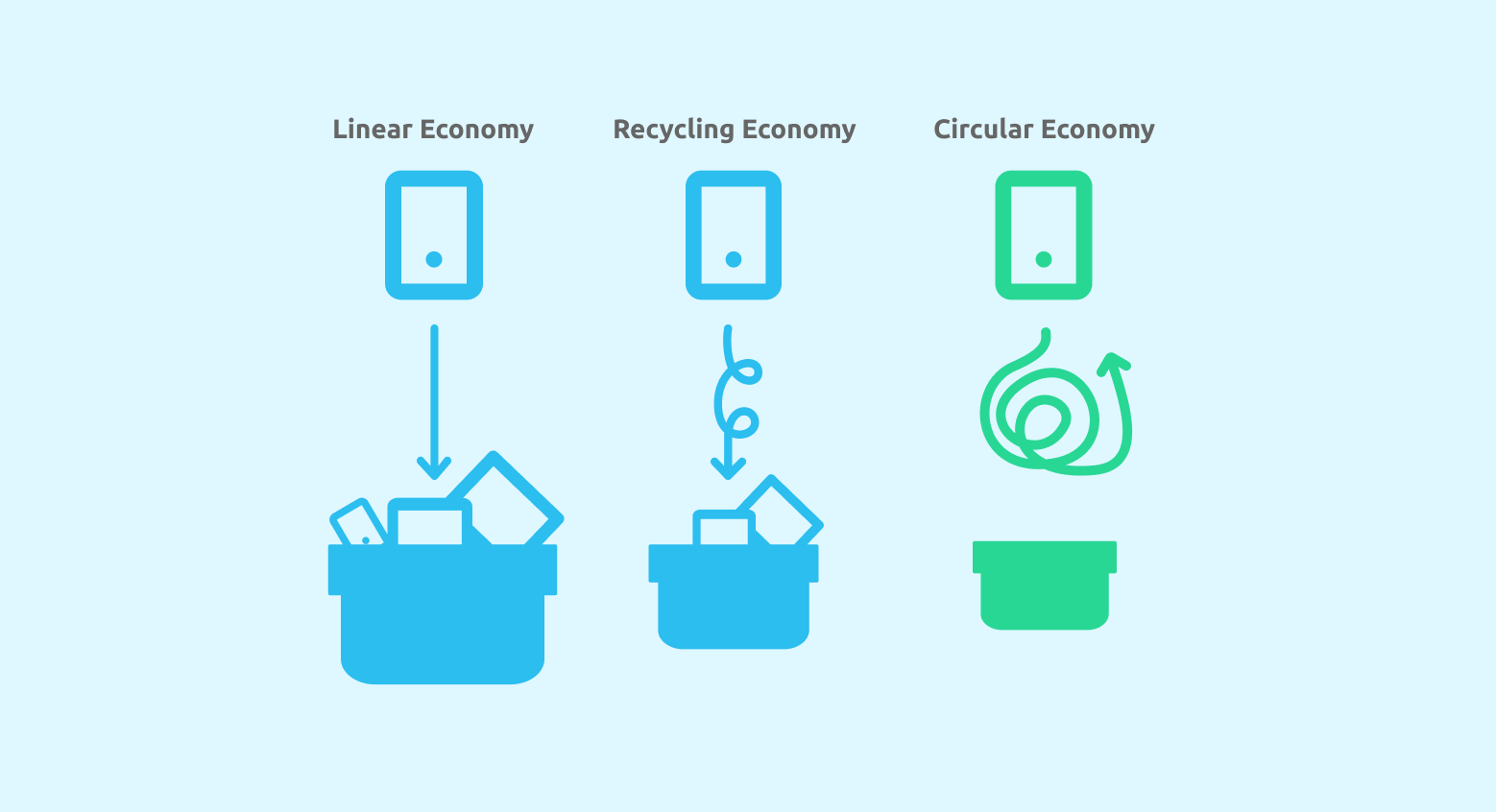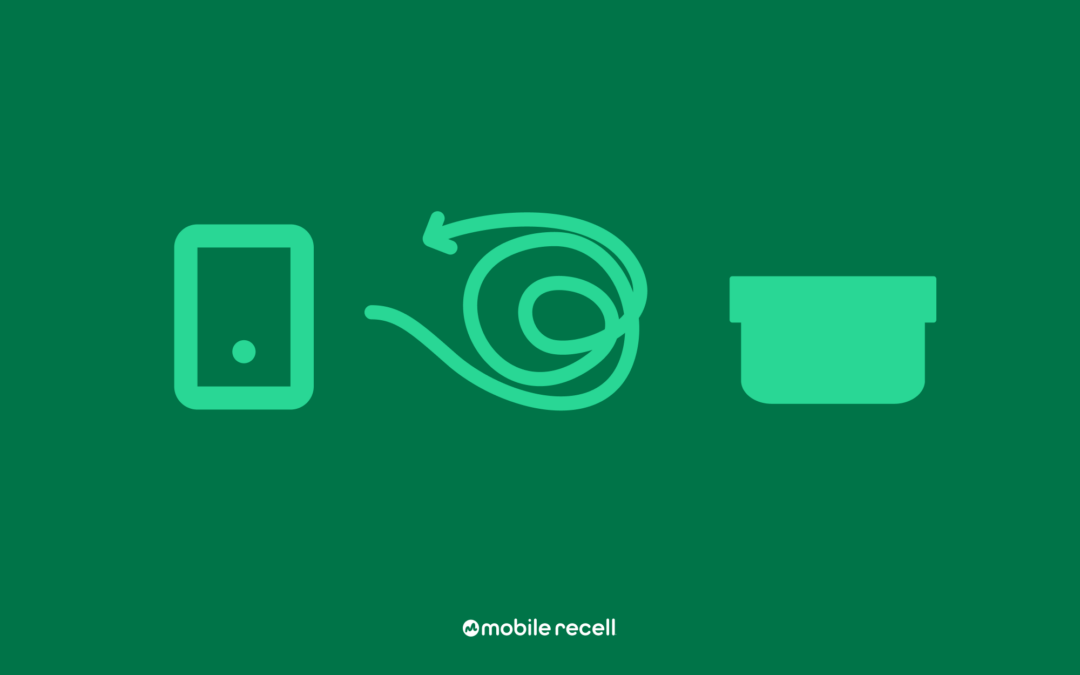What is the Circular Economy?
It’s the latest buzzword in sustainability circles. The phrase may be new to you, but its basic concepts are as old as civilization: reduce, reuse, recycle.
The circular economy goes far beyond the three R’s. However, to fully understand the circular economy, it’s essential to learn about its counterparts—the linear economy and the recycling economy—and how they differ from circularity.
The Linear Economy
Our current model for material management is known as the linear economy, in which we TAKE materials from the earth through mining and other extraction methods, we MAKE products from these materials (including fossil fuels), we USE those products, and then we THROW those materials away.
However, there really is no such thing as away because discarded materials must go somewhere—either to a landfill, where it will sit for centuries, or an incinerator.
This is a linear process because it has a beginning and an end.
The Recycling Economy
The recycling economy is similar to the linear economy, but it has one distinction: there’s a loop that cycles from USE back to MAKE and then on to USE again.
The recycling economy is an improvement to the linear economy because the material’s usable life is extended for another cycle.
But, in most cases, the material’s second time through the MAKE-USE cycle is its last, and soon, that material ends up in the landfill or incinerator to join all the other materials in the linear economy.
Often, the product made from recycled materials is of lesser value, of lower quality, or has diminished utility and/or durability. This is known as downcycling, and it provides minimal progress towards a truly sustainable model for managing materials.
The Circular Economy
The more sustainable model for managing materials is the circular economy.
In a circular economy, products are designed to stay in use for as long as possible, and once their usable life is over, they are refurbished, repaired, or recycled—which is known as upcycling. Since products are designed for utility and longevity, minimal waste is created, and whatever waste is created is managed in the most sustainable manner.

Below are two common definitions of the circular economy:
- US EPA: A circular economy reduces material use, redesigns materials, products, and services to be less resource intensive, and recaptures “waste” as a resource to manufacture new materials and products.
- Ellen MacArthur Foundation: The circular economy is a systems solution framework that tackles global challenges like climate change, biodiversity loss, waste, and pollution. It is based on three principles, driven by design: eliminate waste and pollution, circulate products and materials (at their highest value), and regenerate nature. It is underpinned by a transition to renewable energy and materials. A circular economy decouples economic activity from the consumption of finite resources. It is a resilient system that is good for business, people, and the environment.
The Key Takeaway
As you can see, waste is the enemy, design is the hero, and the winners are people, the planet, and profits.
In many ways, the circular economy is a modern take on how society managed materials in the early industrial era when products were designed for durability, reuse, and repairability—very little was wasted. This was motivated by scarcity—and cost, as a result—of materials, less sophisticated extraction methods, slower modes of transportation, and more accessible skilled labor in fabrication and repair.
Over time, we have shifted from a conservation-focused, material stewardship mindset—the mindset society held in the midst of material shortages and rationing during the World Wars—to a consumption-focused linear economy. This shift was fueled by many factors, including: increased efficiency in mining and transportation systems, technological advances in large scale production, increases in global trade, and consumer demand.
Recycling, particularly at the individual and household level, was positioned as the mainstream ‘solution’ as the majority of society transitioned away from circular models—such as returning bottles for refill—and embraced a convenient, single-use packaging approach.
However, whether it’s food and beverage packaging or mobile devices, recycling simply is not a sufficient solution for responsibly managing materials at their highest and best use for the longest time possible. That’s where waste reduction and reuse, and the other R’s come in as necessary strategies for achieving a more circular economy.
How IT Asset Recovery Helps Achieve a More Circular Approach
The circular economy can be applied to all industries. Enterprises issuing corporate-owned devices to employees must also dispose of retired devices—whether they are resold, reused, or recycled.
But, before an enterprise can dispose of retired devices, it must first recover the devices.
When mobile devices are recovered, the device lifecycle is extended, allowing mobile devices to be redeployed, resold into a secondary market, or reused.
Chat with us to learn how our software-driven IT asset recovery solution can help you participate in the circular economy.
Follow us on social media!
See Mobile reCell’s Recovery Platform in action.

